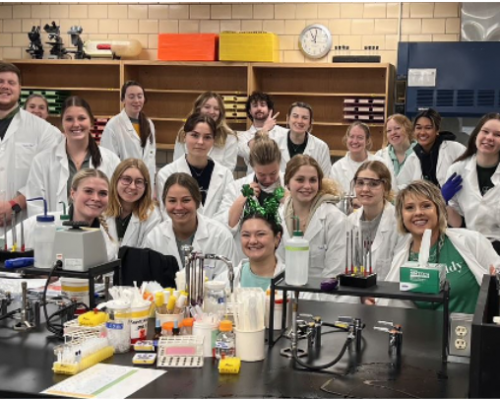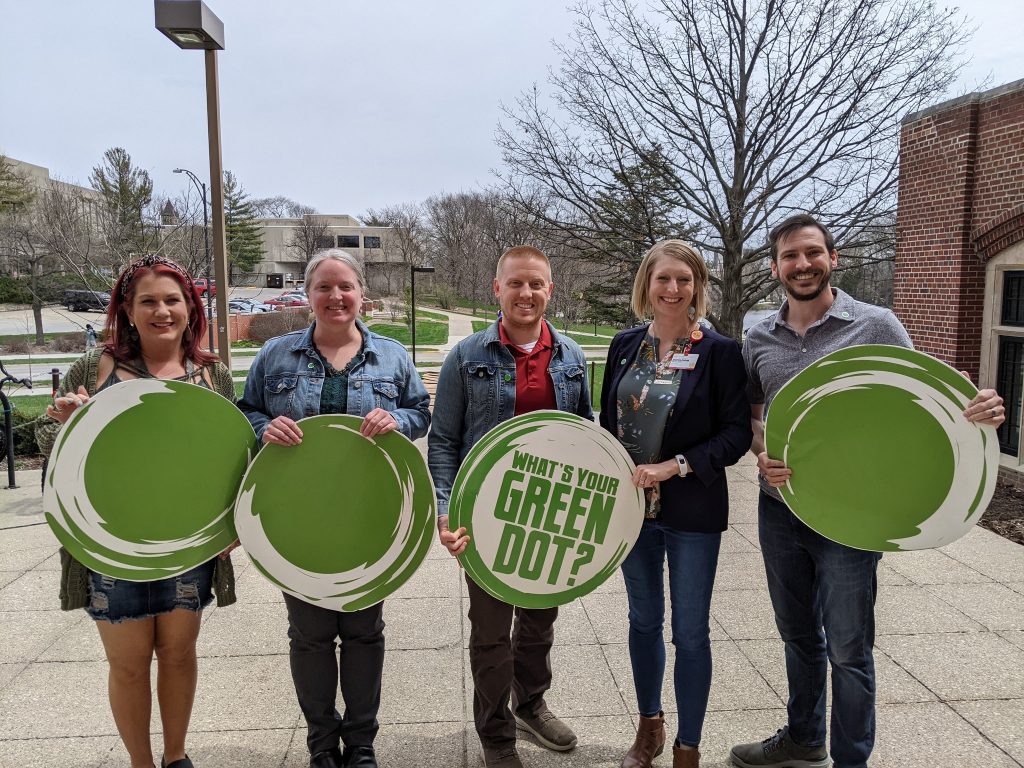Iowa State University
Reaching Students, Faculty and Staff
The ISU Green Dot Program launched towards the end of 2016. Since then, the program has grown from a single coordinator and a handful of facilitators to an entire team of over 20 students, faculty, and staff made up of program strategists, facilitation team members, student workers, and volunteers that represent the many different majors and communities of the university


Green Dot Action Month
A feature of the ISU Green Dot program is the annual university-wide Green Dot Action Month, which is a time when high-impact programming motivate students, faculty, and staff to collectively engage in proactive Green Dots. In 2023, ISU introduced the Green Dot Network Gala, which is an event to mobilize campus partners to join the Green Dot Action Network, announce recipients of our Green Dotters of the Year award, and celebrate the students selected for the ISU Green Dot Scholarship.
Green Dot Action Network
The ISU Green Dot Action Network is an ever-growing collection of student, faculty, and staff groups contributing to a shared vision of power-based, personal violence prevention through community mobilization and bystander education. The purpose of the network is capacity-building and shifting campus cultures away from violence towards care, compassion, and connection.


Green Dot Scholarship
The ISU Green Dot Scholarship recognizes students who exemplify the values of the program. Up to eight students are selected to receive this scholarship – one from each of the Academic Colleges at ISU. Students selected will complete a 10-15 hour campus engagement/mobilization project that helps to embed violence prevention into their unique departments, living spaces, student groups, and/or other communities.
Research
American Journal of Preventative Medicine
This study evaluated the Green Dot bystander intervention to reduce sexual violence and related forms of interpersonal violence in 26 high schools over 5 years and showed a significant decrease in sexual violence perpetration and also in other forms of interpersonal violence perpetration and victimization.
Read more ↗This article explores the methodology of a 5-year, CDC funded study of the Green Dot bystander program as it is implemented in high schools across Kentucky. It is the first of several articles in this special issue of the Violence Against Women journal which discusses the evaluation of Green Dot in high schools.
Read more ↗This study compared rates of violence by type among undergraduate students attending a college campus with the GreenDot bystander intervention with students at two colleges without bystander programs and explains that victimization rates were significantly lower among students attending the campus with Green Dot relative to the two other campuses.
Read more ↗

